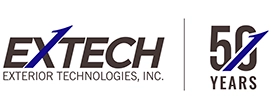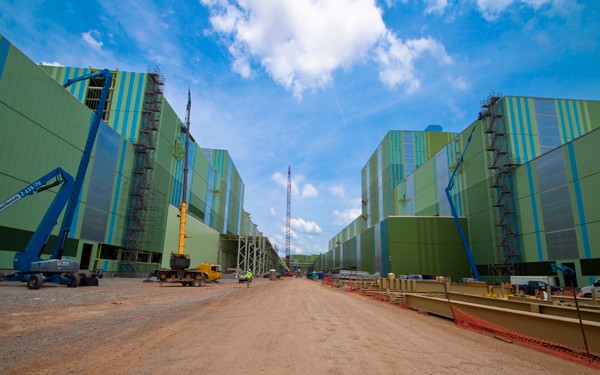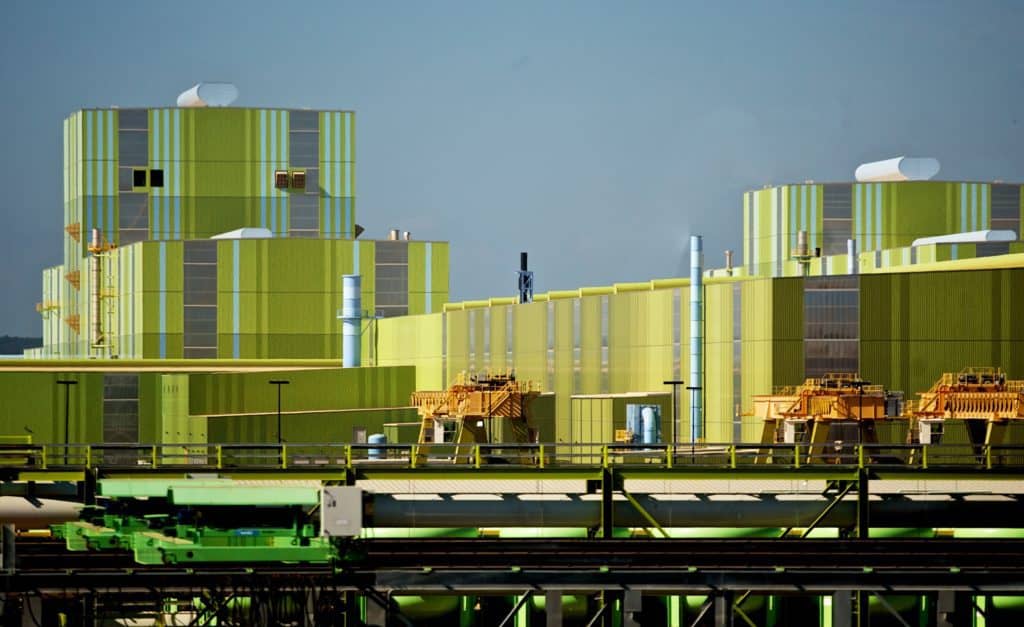Huge Savings without Sacrifice by using EXTECH’s LIGHTWALL 3100LS
Project: ThyssenKrupp Steel Mill
Location: Calvert, AL
System: LIGHTWALL 3100LS
German steel giant ThyssenKrupp needed to cut costs in a big way. Having announced they’d be establishing a United States presence in Calvert, Alabama and bringing 2,700 jobs to the region, they needed to build a 150-acre steel mill with a roof more than 15 times the size of the Superdome's lid. With a budget of $3.7 billion, the construction itself was set to create as many as 29,000 jobs.
But the original design shattered ThyssenKrupp’s building exterior budget – the design team had specified “channel glass”, an expensive high-end glass material that is common in Germany (pricing ranges from $60 sq/ft to $100 sq/ft). Within months of breaking ground, ThyssenKrupp came to EXTECH in the hopes that our polycarbonate systems could deliver the sleek style and daylighting capabilities of their original design, for less cost.
The EXTECH team designed the LIGHTWALL 3100LS, a long spanning structural standing seam wall system, based around a patented two-piece aluminum clamping mullion. EXTECH designed the 3100LS so that it could span large exterior surfaces and deliver a continuous wall of daylight while requiring minimal structural support.
The 3100LS features an internal gasketed water stop for long term performance. In fact, the system was specifically designed for the high durability that industrial and coastal facilities require. The LIGHTWALL 3100LS withstood wind-borne debris and cyclic pressure testing according to ASTM E 1996. This “Missile Impact” testing is required in wind-borne debris regions which are typically located within 1 mile of the coasts.
Pleased with the design of the 3100LS and lower cost, ThyssenKrupp chose EXTECH’s system – resulting in a 66% savings over the originally proposed channel glass. The completed project represents one of the largest cellular polycarbonate glazing installations in North America, utilizing over 310,000 square feet of glazing and nearly 40 linear miles of the aluminum mullion extrusions.



